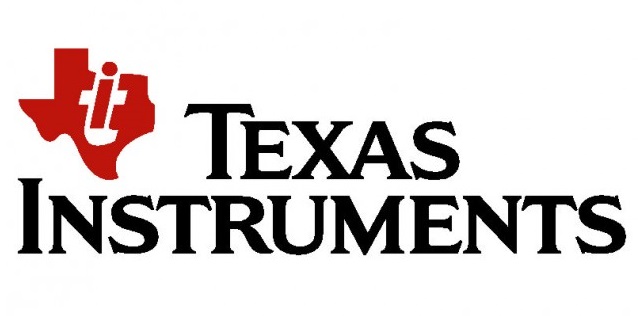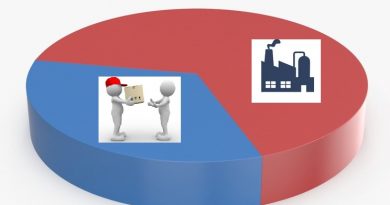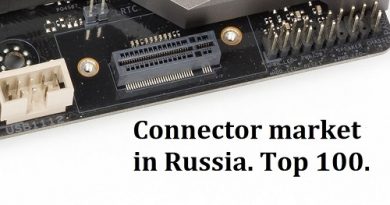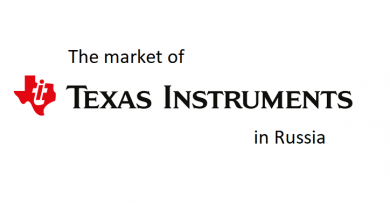Texas Instruments in Russia. A revolution or new opportunities.

If you visit the TI company webpage, in the “distributor search” section, you will see a recently posted newsletter informing of the following:
“Changes to our authorized distributor network.
The main goal of TI company has always been to supply the best products and provide the best support to our customers around the world. Over the past several years, we have been evolving our distribution network to better align with our strategy to establish closer, more direct relationships with our customers. By having these closer direct relationships with our customers, we are able to provide better service and greater assurance of supply, among other benefits.
As we expand our direct customer relationships – including with OEMs, contract manufacturers, ODMs and EMSIs – we will not have as much business flowing through the distribution channel and therefore will require fewer distributors. Given this, we are winding down our business with selected distributors.
This process will take time, and our priority is to ensure a smooth transition for our customers. TI and these selected distributors are working closely together to minimize customer disruptions.
In the short term, there will be no immediate change to the way customers do business with TI. In the long term, customers will continue to have the following options for doing business with TI:
- Directly with TI.
- Through Arrow, as an authorized TI distributor in all regions, with the exception of Japan.
- Through Macnica or TED, who will continue to be authorized TI distributors in Japan.
- Customers who prefer to purchase TI products online for immediate shipment may continue to do so through the TI store, or through DigiKey or Mouser.
We appreciate each of our customers and are evolving how we do business to provide you with even better service over the long term. Thank you in advance for your continued business and trust. We will provide more details to customers as we work through these transitions.
If you have questions, please contact your TI representative.”
If you still haven’t got the idea of this after reading it, then be patient and read to the end. For now, I’ll give a hint – it means new opportunities for all electronic components suppliers.
According to Boris Rudyak back in 2007, “the main and almost the only complication is a low awareness level for the TI products on the Russian market, especially in the field of analog technologies. Indeed, the situation has been changing lately, but if you ask a hundred Russian developers who is the world’s largest producer of analog products, hardly more than a dozen of them will remember of Texas Instruments, the rest will mention other companies. Promoting the best TI solutions will solve this problem.”
I’m sure that at present only 5 Russian developers out of 100 won’t be able to recollect TI company. I must say that Compel has made the most significant contribution to the TI sales development in Russia. It’s not for nothing that it is the only one company in MT-System that remained on the honor board on the TI website. However, as you know, MT-System is a professional, but still a project distributor. It’s not directly involved in creating a mass demand.
Nevertheless, in total, all former and existing distributors, brokers and direct deliveries to consumers showed an impressive growth of the TI products sales in Russia within our market. See table 1.
Table 1. Import to Russia by years. Lines starting from 100 USD
|
year |
cost $ |
|
10 months 2019 |
51,350,554 |
|
2018 |
64,078,458 |
|
2017 |
56,131,338 |
|
2016 |
44,844,728 |
|
2014 |
31,766,694 |
|
2012 |
16,413,402 |
If you look at the customs codes, the group leaders are distributed as shown in table 2.
Table 2. Import to Russia by customs codes for the first six months of 2019.
|
# |
HS Code |
$ |
|
1 |
8542399010 — Other integrated circuits |
14304871 |
|
2 |
8542319010 — Integrated circuits |
6710124 |
|
3 |
8542339000 — Integrated circuits (ICs), other amplifiers |
2305142 |
|
4 |
8542399090 — Electronic integrated circuits, other |
2259340 |
|
5 |
8542319090 — Other processors and controllers, whether or not combined with a memory device, converters, logic circuits, amplifiers, synchronizers or other schemes, other |
1135509 |
|
6 |
8542391000 — Other integrated circuits |
178580 |
|
7 |
8504409000 — Other static converters |
174086 |
|
8 |
8541290000 — Other transistors, except phototransistors |
113148 |
Below, you can find a structure of families and customs codes that you can order for analysis.
In total, within 6 months product for $27,789,000 was imported into Russia under customs documents. As can be seen from code 8542319010, microcontrollers and signal processors account for slightly less than the sales half, with the market share of microcontrollers remaining almost unchanged, but since the market keeps growing, TI sales under the code 8542319010 are growing by value as well. The TI share among all requests in eFind.ru search engine
Table 3. The most searched for microcontroller manufacturers on eFind.ru. Percentage of all requests.
|
|
2010 |
2013 |
2015 |
2017 |
2018 |
|
|
4Q |
4Q |
4Q |
4Q |
4Q |
|
MicrochipTechnology |
67.2 |
49 |
45.9 |
40.8 |
41.6 |
|
STMicroelectronics |
7.6 |
24.1 |
23.6 |
36.1 |
29.8 |
|
TexasInstruments |
7.4 |
8.8 |
9.4 |
6.5 |
7.5 |
|
NXP/Freescale |
12 |
10.5 |
9.3 |
5.6 |
7.1 |
|
SiliconLabs |
2.9 |
4.3 |
3.8 |
3.1 |
3.2 |
|
CypressSemiconductor |
0.7 |
0.7 |
2.1 |
1.2 |
2.6 |
|
RenesasElectronics/NEC |
0.8 |
0.6 |
1.2 |
1.5 |
2 |
|
AnalogDevices |
0.9 |
1,1 |
1.5 |
1.5 |
1.1 |
|
InfineonTechnologies |
0.6 |
0.6 |
1 |
0.6 |
1.3 |
You can find more details on microcontroller market size in my article “Microcontroller market in Russia”
There was a huge growth within the Russian market, but insignificant within TI itself.
The TI share growth in Russia was insignificant, if we consider the FOB volume. Of course, you can add the national VAT, delivery cost and margin here, but the key shareholders of the company are unlikely to be interested in it; they count only the cash that the company receives. The vast majority of Russian companies on the electronic market are run personally. All over the globe, the overwhelming percentage of component market leaders are managed by the board of shareholders and dividend payments. No matter how impressive the sales growth, it accounts for about 0.005% of the total TI global. Of course, with such a ratio, the TI board of directors is unlikely to see Russia on its charts at all. We shouldn’t forget about it. The company has a dozen key owners who have their own representative in the board of directors and together own the key decision-making share package, and lots of top managers. Since the company isn’t managed by a single person, I don’t believe that in the next five years TI will somehow change its decision. It is unlikely to return distribution to Compel or MT-System, or to be more precise, it definitely won’t return, which means that a vacuum is growing in Russia. Everyone will be on an equal footing in Russia in future. Even Compel will cease to motivate its employees to the TI brand in half a year at best. Compel meets third parties’ demand, but it won’t create it for everyone.
Will the TI representatives create or sustain demand? Definitely not. I haven’t yet met a single representative who would deal with it consciously, purposefully, and in sufficient scale. In a best-case scenario, representatives pay 50% of the distributors’ expenditures.
So what has happened? The chairman of the board of directors of Macro Group Dmitry Veleslavov was the one, who foresaw and diplomatically shaped this decision at the beginning of the year. Word-for-word, he wrote in his article:
“For example, Texas Instruments wonders: what do distributors get their margins for? The company has a decent corporate portal, where a lot of engineers are registered. Delivery to any point on the map runs smooth. Why not supply components directly to the customers? And distributors are in fact assigned an insignificant role at the last stage of the supply chain – the role of a forwarder. What do we see on the market? Distributors are turning into forwarding companies.”
The only thing I don’t agree with is the use the “global trend” term. The trend is global, if you consider the major players, but it’s not definitely true for the vast majority of manufacturers. Not yet, but the first steps are obviously being taken. And TI has done it and taken ten steps at once.
TI can’t be called a pioneer in reducing distributors quantity. Analog Devices, Xilinx, Altera – all of them left a single global player, but TI took a step further and made their revolution – they not only left one global player, they deprived all regional players of distribution. To my mind, it is wrong for the countries with a specific market, but given the sales volume in Russia in relation to the whole market… The TI board of directors simply wrote off this market as a possible side effect, although they will never admit it.
You must admit that if you have 15.7 billion of sales, when making a decision you won’t take into account the probable market reduction by 60 million.
The TI team was obviously moving towards it for several years, developing and improving its resources for this decision. They opened Russian speaking support, an online store, reduced distribution, tightening and controlling their rules.
So what do we have? The main thing is that TI opened the market to brokers, almost to all market participants – Radiotechtrade, Elitan, Promelectronica and even to such a modest player as N. At the same time, TI produces almost the whole active components line and is extremely famous on the market.
It will depend only on TI itself, whether the company will lose part of its business in Russia – will they take risk and raise prices, will they promote their products, will they consider special features of the Russian market, how will they enable other brokers to participate in sales, how will ARROW behave when forming the price list. However, I’m sure that almost everything will depend on representation office in the long run – will they be able to maintain the activity that existed before the revolution, will they be able to adopt the distributors’ activities on creating mass demand. After all, there is no one to do it but them. Will they have enough authority? Arrow won’t spend resources on Russia.
Two official distributors account for the majority of TI sales. In total, they occupy 27% of the recipients’ market.
Table 4. Import volume in the first six months 2019 by consignee.
|
# |
Consignee |
Cost $ |
|
1 |
Distributor |
4,493,793 |
|
2 |
Distributor |
3,070,772 |
|
3 |
Broker |
2,402,665 |
|
4 |
Broker |
1,970,226 |
|
5 |
Consumer |
1,834,827 |
|
6 |
Consumer |
1,794,995 |
|
7 |
Consumer |
900,945 |
|
8 |
Consumer |
778,303 |
|
9 |
Contract manufacturer |
652,225 |
|
10 |
Broker |
582,818 |
|
11 |
Broker |
415,963 |
|
12 |
Broker |
365,409 |
|
13 |
??? |
317,719 |
|
14 |
Broker |
305,526 |
|
15 |
??? |
295,318 |
|
16 |
Broker |
250,711 |
Looking at the list of consigners, we’ll get another $6 million of shipments from global distributors. It’s a guaranteed figure, the real one is higher, of course, since many receive goods at their companies, where cargo is consolidated. In total, all distributors account for at least 50% of imports. But there are no distributors anymore.
To my mind, nothing will change in 2020, since the current stocks at warehouses of now former distributors will produce a strong influence. TI also will hold out at least a year of the transition period. However, starting from the end 2020, it is recommended from time to time to monitor delivery schedule for positions that cannot be replaced in your specification. I don’t believe that there will be a shortage, but it’s better to be safe than sorry. In 2021, they will start breaking the current supply channels; this may happen even earlier, as many plan their orders in advance.
If we look at table 4 taking the names of certain companies into account, we can assume that large supplies and large projects account for at least 50% of the sales volume. The representative office will surely nourish and cherish these clients, but they won’t just have enough resources for the rest hundreds of clients. According to my estimates, this amounts to approximately $25 million in selling prices.
The most interesting thing about the imports statistics by consigner is that the only remaining distributor shipped only $800 thousand of goods directly to Russia. Of course, another 1-2 million were bought from it through customs companies, but anyway the redistribution of sales flows will be impressive. And stunning all over the world. According to my data, Arrow supplies to Russia the least amount of goods among all global and Russian distributors.
There is a strange paradox. The only remaining distributor supplies not so much directly to Russia. I would assume the total of 3 million through brokers and distributors, but this is not enough in the total import volume of 27 million. Well, the stronger will be the shakes of our market and the more uncertain the result.
The two remaining distributors will surely retain their leadership in terms of volume within the next 5 years. This is especially true for Compel due to its vast non-franchising experience. And if it builds the right personal strategy, it can even increase its market share. It will be much more complicated for MT-System, since now they will have an extra intermediary and quite a nominal protection for project activities. In the medium term, the company is likely to give up active TI-related project activities if it hasn’t already done so. But for now, these are assumptions only, since the game rules haven’t yet been formally established, but it’s unlikely that I have deviated from future reality greatly.
Nevertheless, those suppliers operating on the Russian market who don’t want to fall behind, including those who have never dealt with TI supplies, should feel optimistic about the future and start taking steps in this direction already now.
What can be done?
1. Pay attention to TI online store.
TI store is TI’s own warehouse program. All items listed there are ready for shipment.
There are eight columns and no opportunity to obtain special conditions, but given the revolution, this is not important yet. A medium-term task I to get a price list and to learn to process it. Now the price is higher than the price for distributors, but if TI really wants to boost direct shipments, then the marketing team must be sure to adjust new coefficients right now.
2. Contact TI itself or its representative office and ask them to send you any information on the future working rules.
3. Contact the only remaining distributor and ask it to send you any information on the future working rules.
4. Analyze the TI’s best-selling items and starting from 2021 maintain their sufficient quantity at your warehouse at the market price for the year 2021.
5. Provide customer support for TI products: Provide free samples. Consulting. Recommendations. All these can be done by TI’s own forces.
6. Asia. Due to the fact that there will be no more distributors, the number of offers from brokers, who have strong ties with the manufacturer, will increase sharply. And despite the fact that now direct shipments from Asia don’t account for any significant market share, it may increase in future. The share will increase, the risk will increase as well; thus, it will be necessary to form a pool of trusted suppliers. With a large number of players, the importance of the shipment quality will increase greatly. Now, there are 2 Russian and about a dozen foreign distributors on the market. When only one will be left, there will be a psychological feeling of no choice, and this will mean searching for an alternative.
At present, the share of Asian supplies (see table 5) is not critical for the market. Especially if you keep in mind that shipments from Singapore and South Korea are meant for factories producing equipment of well-known brands. These are global shipments under global agreements.
Table 5. Import volume in the first six months 2019 by country.
|
Country of dispatch |
Cost $ |
% |
|
Hong Kong (HK) |
3,912,347 |
14.08 |
|
Singapore (SG) |
960,182 |
3.46 |
|
China (CN) |
663,268 |
2.39 |
|
South Korea (KR) |
144,222 |
0.52 |
But still there is a surprise. One broker and obviously one client account for 50% of supplies from Hong Kong. Unexpectedly.
Don’t forget that soon no one in Russia will be able to say for sure that I have an official channel.
To summarize, I will say that I like TI’s solution as an innovative approach. And I’m sure that one and all TOP-25 component manufacturers will closely watch the experiment progress. The future will show whether it will be successful or not, but we won’t know it before 2025. Moreover, we should evaluate two aspects of the future: the global and the Russian separately.
But be sure that I will write about it again; if you have or will have any information, please write. And if you want me to write or analyze data on another company or issue, please contact me.


